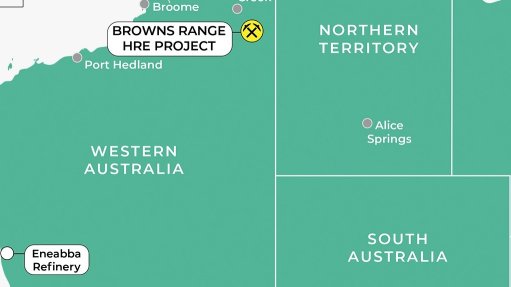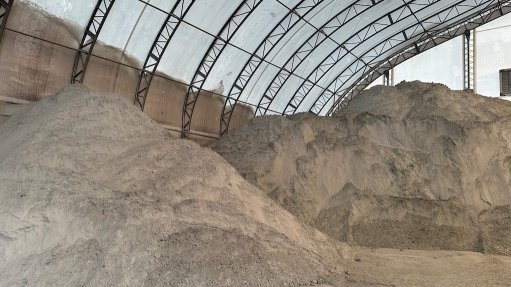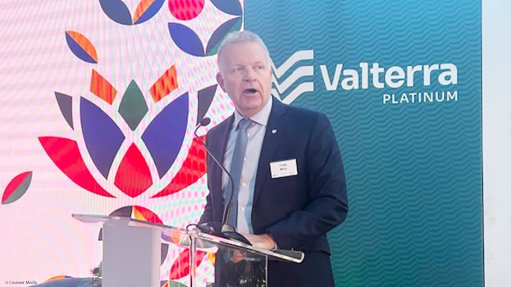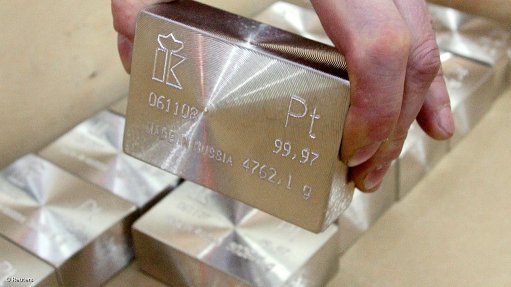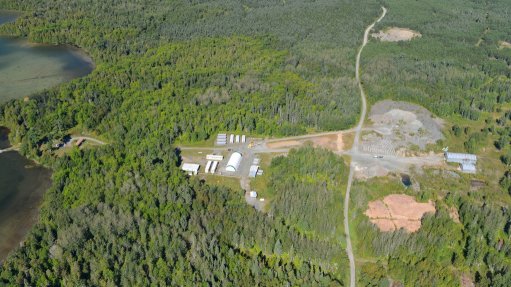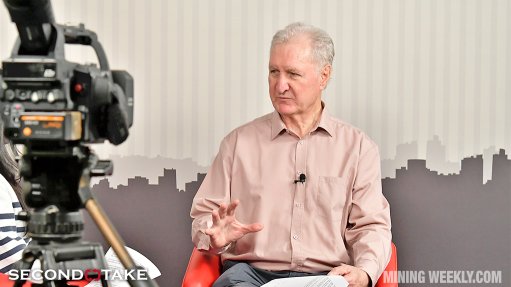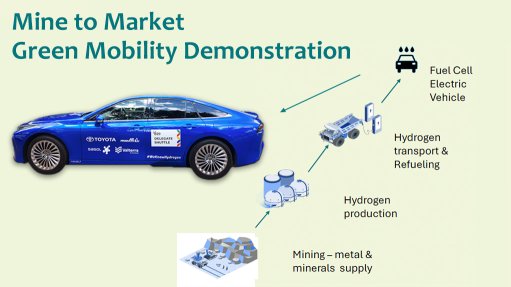Namibian industry set for growth – investment adviser
The Namibian mining industry is set to increase its worth to about N$37.8-billion by 2017, says investment and development adviser Africa Practice.
An initial study in October 2012 showed the industry would be worth about N$40-billion by 2016; the revised figures were released in March.
“Canadian research body The Fraser Institute’s yearly survey of mining companies for 2012/13 ranked Namibia as the third most favourable mining destination on the African continent after Botswana and Morocco, highlighting its key strengths in regulation certainty and the availability of labour and skills,” says Africa Practice.
The company notes that Namibia is a producer of world-class, gem-quality rough diamonds and is the world’s fourth-largest producer of uranium after Kazakhstan, Canada and Australia.
“The country also produces large quan- tities of special high-grade zinc and acid-grade fluorspar, as well as gold bullion, blister copper, lead concentrate, salt and dimension stone, with diamonds being the country’s best-performing commodity.
“The mining industry continues to be Namibia’s largest contributor to gross domestic product (GDP), boosted by the good performance of the diamond sector. Minerals account for 58% of Namibia’s exports, with diamonds being the major contributor,” Africa Practice notes.
Mining accounts for 8% of Namibia’s GDP, providing more than 50% of the country’s foreign exchange earnings. The industry also accounts for almost a quarter of all fixed investments in the country, with sector invest- ing earning about N$4.3-billion in 2010, Africa Practice states, adding that a significant amount of exploration expenditure is not cap- tured in the official statistics, which means that the true figure is likely to be higher than that.
Currently, five major mining operations in Namibia generate more than 95% of the country’s mining income. These are Namdeb, in Sperregebeit, a diamond mine jointly owned by the Namibian government and diamond mining giant De Beers; zinc mine Rosh Pinah, owned by minerals giant Exxaro Resources; the Rössing uranium mine, the world’s fifth-largest uranium mine, owned by international mining giant Rio Tinto; the Tsumeb operation, owned by the Tsumeb Corporation, which mines and smelts copper and other base metals; and the Navachab gold mine, near Karibi, owned by international mining giant AngloGold Ashanti.
Tax Regime
The company notes that, as with many jurisdictions across Africa, sentiment has been increasingly swayed toward the adoption of resource nationalism in Namibia, as government has indicated that the industry should contribute more to the welfare of the country.
The maximum tax rate on a mining company is 25%. Most mining companies pay between 25% and 40%, with diamond mines taxed at 55%. Corporate tax of 40% applies to profits from nonmining activities in the country.
“Currently, mining royalties and taxes contribute up to a quarter of government revenue. The Namibian government proposed a more robust mining tax last year, which may become a hurdle for the growth of the industry.
“New tax proposals include a 15% tax on exports of raw materials. Government is planning to establish dedicated mining tax offices under this new directorate,” states Africa Practice.
The company adds that Namibia’s New Equitable Economic Empowerment Frame- work (NEEEF), introduced in 2012, is considered to be similar to South Africa’s broad-based black economic-empowerment (BBBEE) policy.
“The policy is yet to be legislated, but will have a wide impact on the country’s minerals sector. The NEEEF, like BBBEE, will require mineral operations to yield stakes to the country’s black population,” says Africa Practice.
The Namibian government is also expected to increase its involvement in natural resources through State-owned mining entity Epangelo Mining. This company, which will initially be funded by government, will consider all strategic minerals. Various private and State-owned organisations have already expressed interest in partnering with this new organisation, notes Africa Practice.
“A strategic minerals policy declares diamond, uranium, copper, gold, zinc and coal as strategic minerals. This would give Epangelo Mining rights to these minerals. Government expects this to provide more benefits from the country’s mineral resources for Namibians.
“When it first announced its involvement in minerals, the State said it would give exclusive rights for strategic minerals to Epangelo; however, thus far, the mining company has been involved in projects and partnerships with other companies. For example, Epangelo has acquired a 10% stake in uranium mining company Swakop Uranium’s Husab mine, located near Swakopmund, on Namibia’s west coast,” says Africa Practice.
Challenges and Solutions
The company notes a key challenge for the mining sector in Namibia remains the vulner- ability and exposure to trends in global commodities markets.
“The growing global challenge of nuclear power will present a significant challenge to the country’s uranium market, which accounts for about 10% of international supply. Positive signs are reflected through the interest shown by the South African and British governments in nuclear power,” notes Africa Practice.
Another challenge is the country’s reliance on mineral exports, which makes it vulnerable to external commodity cycles, such as that of uranium, which has experienced a setback since the Fukushima disaster in 2011, increased negative sentiments pertaining to nuclear energy and pullback investment worldwide.
“With regard to the employment challenge of the future, employment can be encouraged by facilitating a conducive environment for exploration, leading to the creation of new mines. Mines and exploration companies collectively employed 7 306 people in permanent positions in 2011, an increase of 6.7% on the employment figures of 2010.
“A rebound in diamond and uranium prices in 2010 and the reopening of copper mines in 2011 provided a significant boost to Namibia’s mining sector. The economy expects to benefit from large investment projects in its mining sector and, with expected higher global uranium prices, the country plans to double its uranium export by 2015 and increase its diamond output,” states Africa Practice.
The company adds that the mining sector currently employs 3% of the population, proving that significant growth can be realised and that it will boost mining’s contribution to the country’s employment.
“Further, increased interest in marine mining means government will enact an appropriate legal framework and attend to the relevant issues pertaining to marine mining and exploration. Environmental concerns will be carefully considered in all issues,” notes Africa Practice.
Going forward, there are several projects in the pipeline for the Namibian mining sector, including investments in the uranium and diamond sectors.
Other companies undertaking expansion projects in the mining industry include Australia-based international uranium miner Marencia Energy, uranium exploration company Deep Yellow and uranium development company Bannerman Resources, whose projects have a combined value of $4.2-billion.
Article Enquiry
Email Article
Save Article
Feedback
To advertise email advertising@creamermedia.co.za or click here
Press Office
Announcements
What's On
Subscribe to improve your user experience...
Option 1 (equivalent of R125 a month):
Receive a weekly copy of Creamer Media's Engineering News & Mining Weekly magazine
(print copy for those in South Africa and e-magazine for those outside of South Africa)
Receive daily email newsletters
Access to full search results
Access archive of magazine back copies
Access to Projects in Progress
Access to ONE Research Report of your choice in PDF format
Option 2 (equivalent of R375 a month):
All benefits from Option 1
PLUS
Access to Creamer Media's Research Channel Africa for ALL Research Reports, in PDF format, on various industrial and mining sectors
including Electricity; Water; Energy Transition; Hydrogen; Roads, Rail and Ports; Coal; Gold; Platinum; Battery Metals; etc.
Already a subscriber?
Forgotten your password?
Receive weekly copy of Creamer Media's Engineering News & Mining Weekly magazine (print copy for those in South Africa and e-magazine for those outside of South Africa)
➕
Recieve daily email newsletters
➕
Access to full search results
➕
Access archive of magazine back copies
➕
Access to Projects in Progress
➕
Access to ONE Research Report of your choice in PDF format
RESEARCH CHANNEL AFRICA
R4500 (equivalent of R375 a month)
SUBSCRIBEAll benefits from Option 1
➕
Access to Creamer Media's Research Channel Africa for ALL Research Reports on various industrial and mining sectors, in PDF format, including on:
Electricity
➕
Water
➕
Energy Transition
➕
Hydrogen
➕
Roads, Rail and Ports
➕
Coal
➕
Gold
➕
Platinum
➕
Battery Metals
➕
etc.
Receive all benefits from Option 1 or Option 2 delivered to numerous people at your company
➕
Multiple User names and Passwords for simultaneous log-ins
➕
Intranet integration access to all in your organisation






